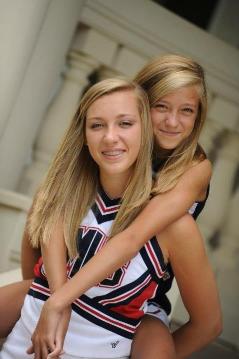Head Injuries
Jerri Ayers knew her daughter Ashton was special from the moment she was born seven and a half weeks early on April 8, 1998. She had lost two pregnancies before she conceived Ashton and could tell this baby was a fighter. Fourteen years later, as Ashton clung to life at Children’s of Alabama following a serious traumatic brain injury, Jerri found comfort in remembering how Ashton struggled as a newborn. “I knew I didn’t go through what I did with Ashton then for her to be taken away from me this early,” Jerri recalls. It was Sept. 22, 2012, and Ashton headed out with friends to ride in a golf cart through the neighborhood. Suddenly, the golf cart swerved and Ashton fell out, banging the back of her head on the pavement. The impact was so hard it cracked her skull, broke through her sinuses, and knocked her unconscious. She was immediately transported to Children’s. Jerri rushed to the hospital to be by her daughter’s side. “She was conscious, but not coherent when I got there,” she recalls. A CT Scan revealed a large subdural hematoma, or bleeding between the layers of the brain. Over the next 24 hours, Ashton’s condition gradually and subtly worsened until her breathing stopped and she went into full respiratory arrest. “At that point they pushed us aside, and then out of the room, and then down the hall. When they send you into the waiting room, you know it’s pretty bad,” Jerri says. The doctors at Children’s stabilized her enough to perform a decompressive craniotomy, a neurosurgical procedure in which part of the skull is removed to allow room for the brain to swell. After surgery, Ashton was in a coma breathing with the assistance of a respirator and getting nutrition through a feeding tube. “The next seven days were a rollercoaster of emotions and hurdles,” Jerri recalls. Ashton had good hours when she would start to improve followed by bad hours where her condition regressed. It seemed they were always fighting infections or fevers or severe headaches. But gradually, over time, Ashton’s health began to make a turn for the better. She was finally healthy enough to have the bones in her skull replaced, which helped put an end to the debilitating headaches. She also began speech, physical and occupational therapy with Children’s therapists. About a month after arriving at Children’s of Alabama with the traumatic brain injury, Ashton was finally able to go home. She is still recovering and is trying to catch up with schoolwork with a teacher at home. She attends a couple classes at school a few days a week, and continues with speech therapy to help with short-term memory loss. “My memory is getting better,” she says. “I made all As and Bs this past nine weeks, and that’s given me more confidence.” Ashton’s goal is to return to Oak Mountain High School with her classmates next fall, and her parents have little doubt she won’t reach that milestone. “She is a strong kid, but I have to give credit where credit is due,” her father, Jeff, says. “We all agreed that if she had not been at Children’s we wouldn’t still have her here. We really appreciate what they did for her.”







